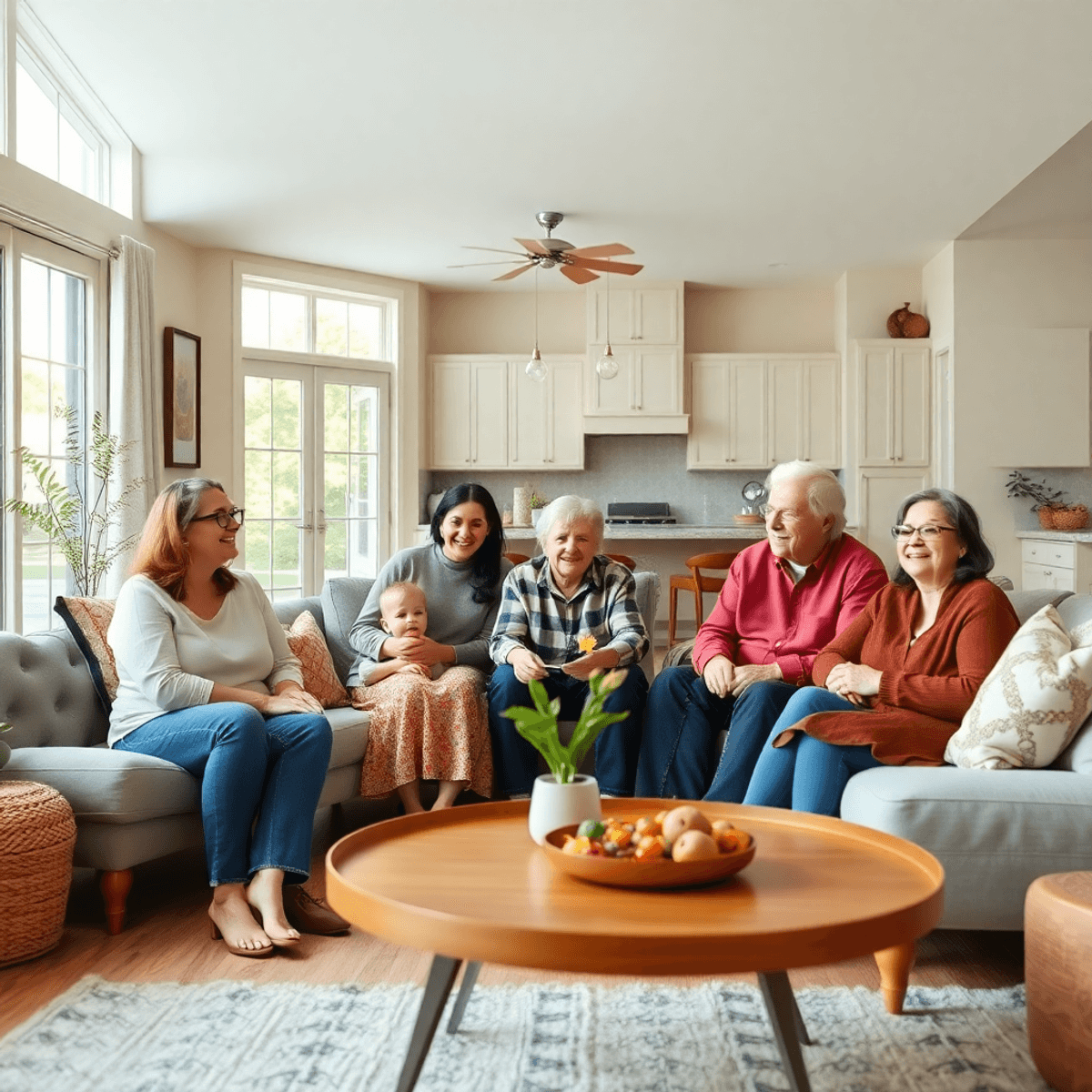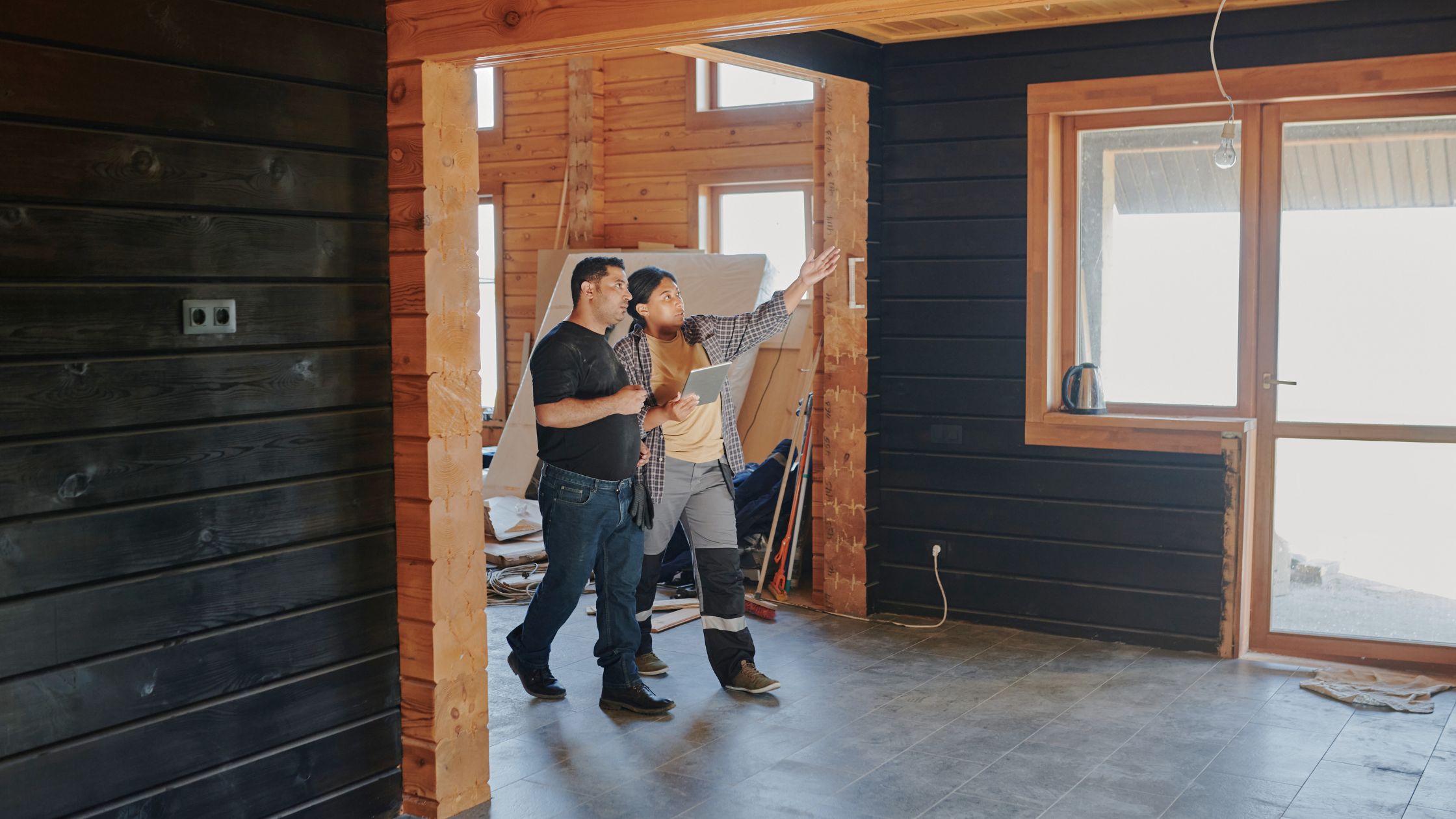The Multi-Generational Living Boom in Illinois Homes
The Rise of Multi-Generational Living in Illinois: A Trend Worth Exploring
Multi-generational living, where multiple adult generations such as siblings, adult children, parents, and grandparents reside under one roof, is on the rise in Illinois homes. This living arrangement is becoming increasingly popular due to various economic and social factors.
Understanding these dynamics can provide valuable insights into why more families are opting for this lifestyle and how it impacts housing trends across the state.
As families adapt to this new lifestyle, many are also considering renovations to better suit their needs. Whether it’s creating a more open kitchen space through kitchen remodeling, or adding a sunroom that maximizes natural light with a sunroom addition, these renovations can significantly enhance the functionality and comfort of multi-generational homes.
Understanding the Appeal: Why Are More Families Opting for Multi-Generational Living?
1. Cost Savings
Cost savings sit at the top of the list when families weigh the benefits of multi-generational living. Rising home prices, property taxes, and utility costs make it increasingly difficult for many Illinoisans to afford separate households. By pooling financial resources, families can secure larger homes, split mortgage payments, and share everyday expenses like groceries and utilities. A single household budget stretches further, freeing up income for other priorities such as education or retirement savings.
To maximize the value of their shared living space, families often consider creating a family-friendly layout or even transforming their basement into a functional living space, providing additional room for everyone.
2. Caring for Aging Parents
The need to care for aging parents is another powerful motivator behind this trend. With the cost of long-term care facilities climbing and waitlists growing longer, keeping elderly relatives at home offers both emotional comfort and practical support. Multi-generational living allows adult children to assist with daily activities—medication management, transportation to appointments, or meal preparation—while aging parents remain in a familiar environment. This arrangement often strengthens bonds across generations and provides peace of mind that loved ones are safe and cared for.
Interestingly, studies have shown that multi-generational living can have significant positive impacts on mental health, providing emotional support and reducing feelings of isolation among older adults.
3. Changing Family Dynamics
Adult children returning home or never leaving in the first place reshape family dynamics as well. High student loan debt, uncertain job markets, and inflated rental prices mean more young adults are choosing to live with their parents longer than previous generations. This shift creates both opportunities and challenges: shared responsibilities around the house can lighten workloads, but balancing independence with communal living requires clear boundaries and open communication.
Families across Illinois are finding that these multi-generational arrangements offer practical solutions to modern economic pressures while redefining what it means to be “home” together.
Demographics at Play: Who Are the Buyers Driving the Multi-Generational Living Market?
Older Buyers
Multi-generational living arrangements are particularly appealing to older buyers. The median age of multi-generational home buyers is 57, making them a significant demographic in this market. These older buyers often seek to combine households for practical reasons, such as downsizing after retirement or providing support for aging parents.
Older adults may find it beneficial to share a home with their children or grandchildren, reducing living expenses and enhancing social connections. This demographic values the ability to age in place while having immediate family nearby to assist with daily needs and medical care.
The Sandwich Generation
The Sandwich Generation, typically individuals in their late 30s to early 50s, faces unique challenges as they balance responsibilities for both their aging parents and their own children. This group is a driving force behind the surge in multi-generational living due to several factors:
- Caregiving Duties: Many members of the Sandwich Generation are primary caregivers for their elderly parents while also raising children. Co-living arrangements can alleviate some of the stress associated with these dual responsibilities by providing shared caregiving duties and emotional support.
- Financial Pressures: With rising healthcare and childcare costs, combining resources in a single household can relieve some financial burdens. Shared expenses for utilities, groceries, and mortgage payments can make a significant difference in managing tight budgets.
- Time Management: Juggling work commitments with caregiving duties can be overwhelming. Multi-generational living allows for more flexible time management as family members can share tasks such as childcare pickups or attending medical appointments.
These demographic factors highlight why older buyers and the Sandwich Generation are pivotal players in the growth of multi-generational households in Illinois. Understanding these groups’ motivations provides insight into the evolving housing trends and needs within the state.
To navigate these changing dynamics effectively, it’s essential to stay informed about housing market news that could impact multi-generational living arrangements. Additionally, considering eco-friendly remodeling options could enhance these living spaces while promoting sustainability. If you’re contemplating a bathroom remodel as part of your home adjustment, there are numerous resources available that provide insights into planning and executing a stress-free renovation.
Navigating Benefits and Challenges: What to Expect When Living Under One Roof with Multiple Generations?
Shared living under one roof brings distinct advantages, especially in the context of The Multi-Generational Living Boom in Illinois Homes. At the center of this arrangement is family support—a safety net woven from both financial and emotional threads. This support extends beyond just emotional aspects; it also plays a crucial role in addressing various health-related social needs that may arise in a multi-generational setup.
Key Benefits:
- Financial Relief: Pooling resources across generations reduces per-person expenses for everything from mortgage payments to utility bills and groceries. Shared caregiving, such as splitting child care or elder care duties, can cut out-of-pocket costs substantially.
- Emotional Support: Having multiple family members present fosters a sense of belonging and stability. Grandparents become active participants in grandchildren’s lives, offering guidance and support during challenging times. Adult children often benefit from the wisdom and experience of older family members.
- Shared Caregiving: The daily demands of caring for aging parents, young children, or family members with health needs are distributed more evenly, alleviating stress on any single caregiver.
“Living together has made us stronger as a family. We lean on each other when things get tough,” shared a Chicago mother whose home now includes three generations.
Common Challenges:
- Privacy Concerns: With more people under one roof, personal space becomes limited. Noise levels can rise, routines may clash, and finding time alone is not always easy.
- Interpersonal Dynamics: Differences in parenting styles, generational values, and household habits sometimes spark disagreements. Negotiating boundaries—such as who cooks meals or how common spaces are used—requires ongoing communication.
- Decision-Making Tensions: Important choices about finances, medical care, or daily routines may lead to friction when priorities differ among generations.
Balancing these competing factors demands flexibility and open dialogue. Families taking part in The Multi-Generational Living Boom in Illinois Homes often find that clear agreements about roles and responsibilities help maintain harmony while maximizing the benefits of shared living.
One aspect that often requires collective decision-making is home renovations or modifications to accommodate the needs of all generations. For instance, choosing the right bathroom tile can be a significant decision when renovating for accessibility or style preferences that suit different age groups.
ADUs: A Practical Solution for Accommodating Multi-Generational Households in Illinois
Accessory Dwelling Units (ADUs) have become a popular housing option for multi-generational families in Illinois. These smaller, independent housing units located on the same property as a primary home offer a unique solution to the challenges of shared living.
Benefits of ADUs:
- Privacy: ADUs provide separate living spaces within the same property, allowing family members to maintain privacy while staying close to their loved ones.
- Affordability: Building or converting existing spaces into ADUs can be more cost-effective than purchasing larger homes or separate properties. This makes it an attractive option for families looking to save on housing costs.
- Flexibility: ADUs can be tailored to meet the specific needs of multi-generational households. Whether it’s accommodating aging parents, providing space for adult children, or offering rental opportunities, the versatility of ADUs is invaluable.
- Neighborhood Character: ADUs help maintain the character and integrity of neighborhoods by providing additional housing options without significantly altering the community’s appearance.
Considerations When Incorporating an ADU:
- Local Regulations: Before adding an ADU, it’s essential to understand local zoning laws and building codes. Communities like Evanston and South Elgin have specific regulations governing ADU construction.
- Design and Accessibility: Designing an ADU requires careful planning to ensure accessibility for elderly family members and adequate space for all occupants.
- Financial Investment: The initial cost of constructing or converting an existing space into an ADU can be substantial. Families must weigh these expenses against long-term benefits.
In Illinois, cities such as Chicago have lifted bans on ADUs, recognizing their potential to address housing shortages and support multi-generational living arrangements. Recently, Illinois has taken significant steps towards addressing the housing needs of its middle-income residents, which could further enhance the viability of incorporating an ADU into your property. By doing so, you create a practical solution that enhances family cohesion while respecting individual needs.
Moreover, with the evolving home rental trends in Illinois (source), families considering renting out their ADU can gain valuable insights from these trends.
It’s also worth noting that there are several Illinois homeowner programs available that can assist with affordable remodeling, including those needed to convert existing spaces into functional ADUs.
Lastly, as you plan your ADU construction or conversion, consider exploring some practical renovation ideas that could help in lowering energy costs while also improving overall energy efficiency. And don’t forget about enhancing curb appeal through exterior improvements, which can make your property more attractive both for personal use and when renting out an ADU.
The Bigger Picture: How Does Illinois’ Experience with Multi-Generational Living Compare Nationally?
Illinois reflects a broader trend seen across the United States, where multigenerational households are becoming increasingly common. Nationally, nearly 60 million Americans live in multigenerational homes, representing about 1 in 5 people. This trend is driven by various factors such as economic pressures, high housing costs, and cultural traditions. Illinois is no exception; the state’s urban and suburban areas have witnessed a significant rise in these living arrangements.
Comparative Statistics
Illinois sees approximately 17% of homes purchased recently being multigenerational households.
National average mirrors this growth, with similar percentages reported across various states.
The rise in multigenerational households is not solely due to economic reasons but also deeply rooted in cultural heritage transmission. Many Latino and African American families in Illinois maintain strong cultural traditions that emphasize close-knit family structures and shared living spaces. These traditions support the idea of multiple generations under one roof, providing a nurturing environment for children and preserving cultural values.
Cultural Heritage Transmission
Latino Families: Emphasize familial bonds and collective caregiving responsibilities.
African American Families: Share similar values, often prioritizing community and family support systems.
This transmission of cultural heritage plays a crucial role in shaping family structures across different regions. In Illinois, these dynamics contribute significantly to the prevalence of multigenerational households. By fostering environments where multiple adult role models are present, children benefit from diverse perspectives and reinforced values.
The Role of Home Remodeling in Adapting to Multi-Generational Living
As more families embrace this lifestyle, there arises a need for remodeling homes to better suit their needs. This could involve creating separate living spaces within a single property or modifying existing rooms to accommodate more family members comfortably.
In light of these changes, many families are exploring ways to secure Illinois grants for home improvement and renovation projects. Such financial assistance can significantly ease the burden of remodeling costs and make it easier for families to adapt their homes for multi-generational living.
Moreover, with the rising emphasis on energy efficiency, families are also looking into home energy efficiency grants to save on their next remodel. These grants can provide substantial savings while upgrading homes to be more sustainable.
Additionally, the integration of [smart home technology](https://illinoisrdn.com/smart-home-technology-upgrading-your-illinois-house-with-automated-systems) into these remodeled spaces can further enhance the functionality of homes. Automated systems can improve the management of various home functions such as lighting, heating, security, and entertainment – making them more convenient and energy-efficient.
Understanding these comparative elements helps grasp why Illinois aligns closely with national trends while highlighting the unique cultural contributions that shape family living arrangements within the state.
Conclusion
The rise of Multi-Generational Living in Illinois homes showcases how families are adapting to changing economic realities. With Illinois having one of the most unstable housing markets, multi-generational living stands out as a practical and compassionate housing solution, blending financial resilience with strong family support systems. ADUs and flexible home designs offer real answers for extended families seeking both independence and connection.
Additionally, rehab and renovation play a crucial role in this trend, transforming older Illinois properties into modern living spaces that cater to the needs of multi-generational families. Embracing this trend means recognizing the value of shared resources, cultural continuity, and emotional bonds—factors that shape the future of modern households across Illinois. For families considering next steps, multi-generational living delivers options that are both sustainable and deeply rooted in community.
news via inbox
Nulla turp dis cursus. Integer liberos euismod pretium faucibua








